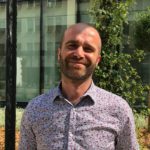Link to Pubmed [PMID] – 27294616
Phytopathology 2016 11;106(11):1291-1299
Based on time and spatial dynamic considerations, this study evaluates the potential role of short- and long-distance dispersal in the spread of coffee wilt disease (CWD) in a large commercial Robusta coffee estate in Uganda (Kaweri, 1,755 ha) over a 4-year period (2008 to 2012). In monthly surveys, total disease incidence, expansion of infection foci, and the occurrence of isolated infected trees were recorded and submitted to spatial analysis. Incidence was higher and disease progression faster in old coffee plantings compared with young plantings, indicating a lack of efficiency of roguing for reducing disease development in old plantings. At large spatial scale (approximately 1 km), Moran indices (both global and local) revealed the existence of clusters characterized by contrasting disease incidences. This suggested that local environmental conditions were heterogeneous or there were spatial interactions among blocks. At finer spatial scale (approximately 200 m), O-ring statistics revealed positive correlation between distant infection sites across distances as great as 60 m. Although these observations indicate the role of short-distance dispersal in foci expansion, dispersal at greater distances (>20 m) appeared to also contribute to both initiation of new foci and disease progression at coarser spatial scales. Therefore, our results suggested the role of aerial dispersal in CWD progression.
